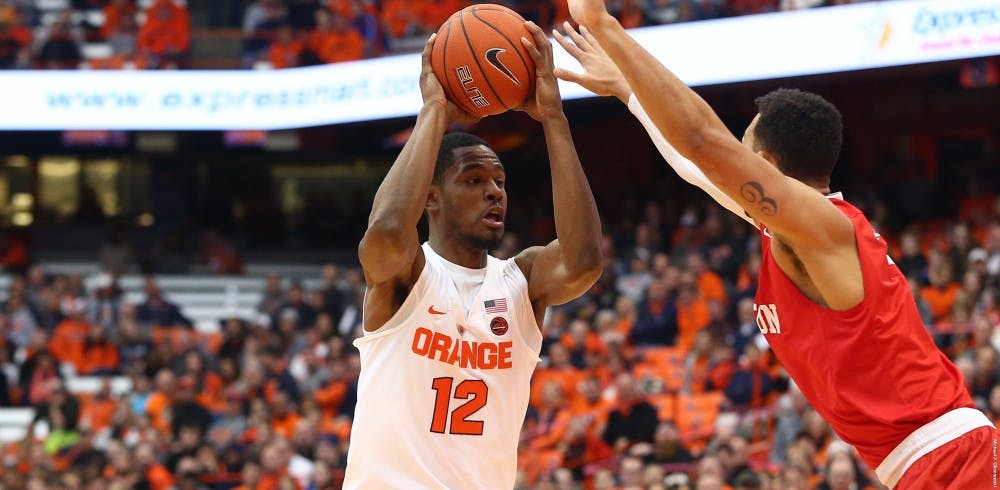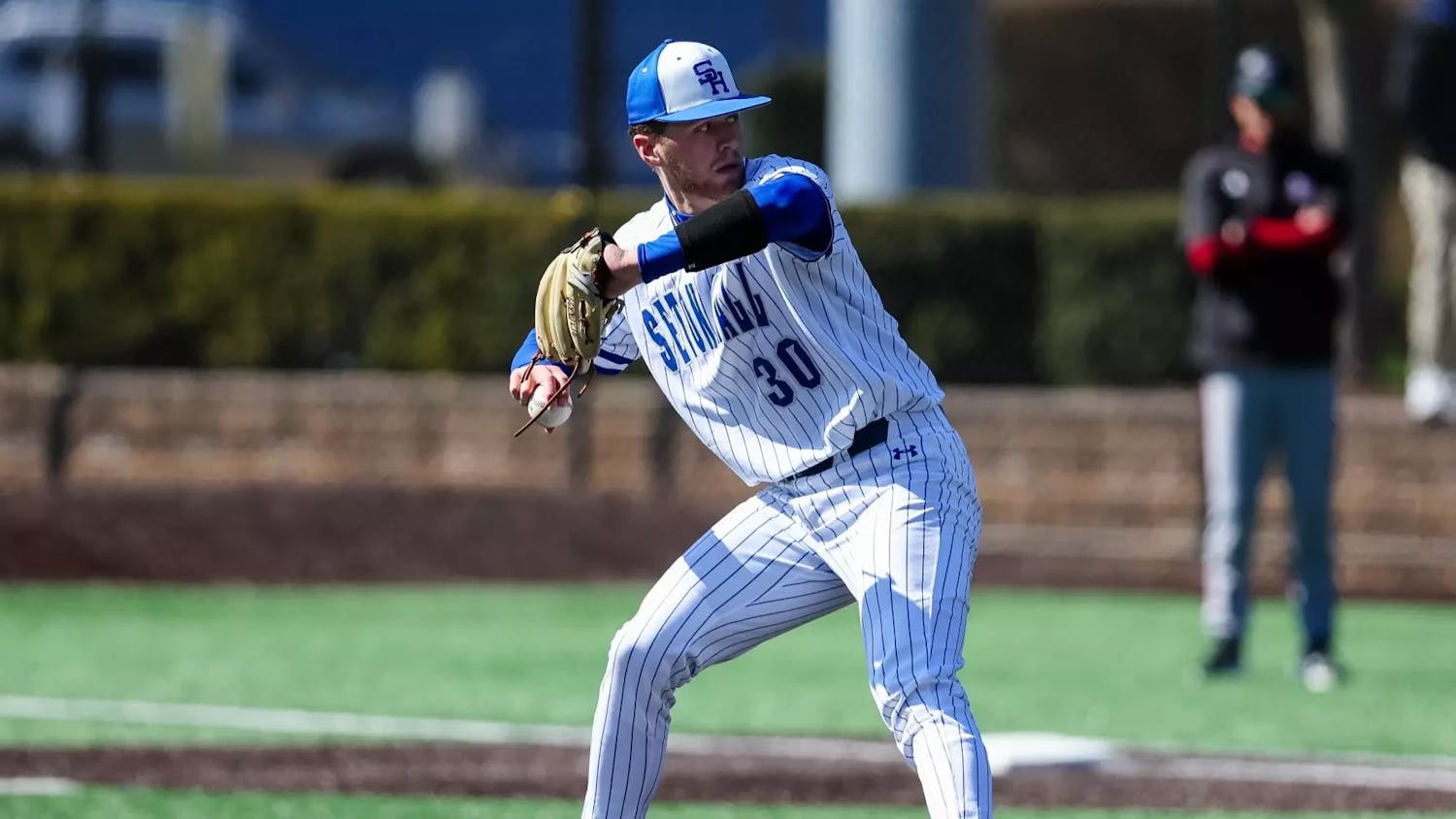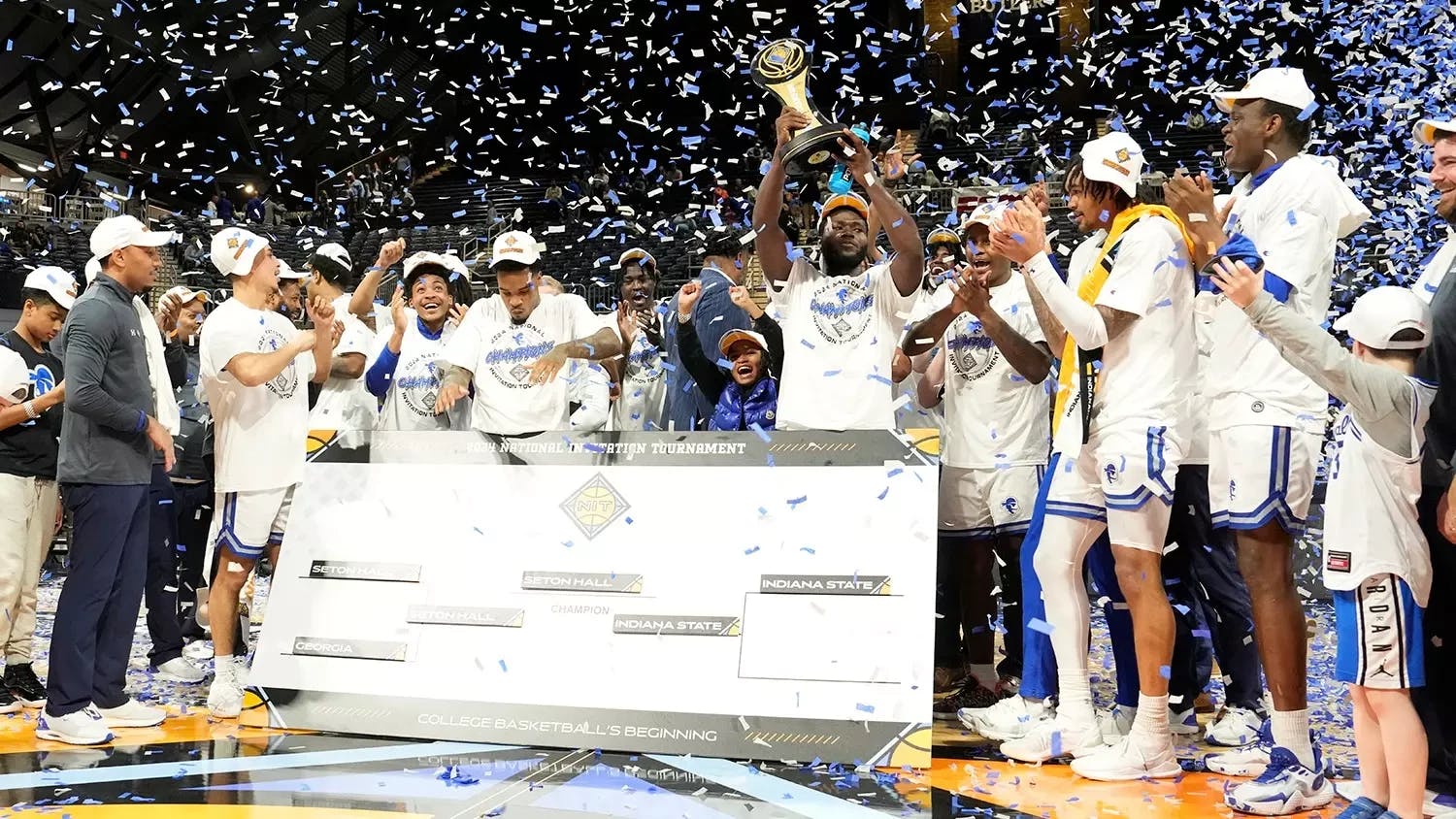There is a clear-cut divide in college sports as to whether the NCAA should continue to enforce its rule of requiring transfer student-athletes to sit out a year before engaging in athletics at the school they transferred to.
On one side, there are the coaches, who want the rule to stay in place because allowing immediate play after transferring would cause chaos in shifting rosters.
[caption id="attachment_19537" align="aligncenter" width="838"] Photo via cuse.com[/caption]
On the other side, if the rule were changed, student-athletes would be able to make a transfer decision without worrying about sitting out a year, providing them with more opportunities.
News of the NCAA’s consideration of this change was included in a report by 247Sports’ Andrew Slater on Sept. 5, where he said there is a proposal “being solicited among (NCAA) members for feedback” on allowing transfers to play immediately after transferring.
In order for this to take effect, a student-athlete would have to meet a minimum GPA requirement. Also included in the report was that any more than one transfer by a student-athlete would require a mandatory sit-out year.
This proposition is a step in the right direction to treating student-athletes truly like students. The organization has shown that treating them as such is the reason for not paying them or allowing endorsements, and this move would solidify that belief.
In a question forum on NCAA.org, it is stated that “requiring student-athletes to sit out of competition for a year after transferring encourages them to make decisions motivated by academics as well as athletics.”
Taking this into consideration, why is a regular student that transfers to another college allowed to immediately partake in extracurricular activities? Why does the NCAA need to stipulate these restrictions when non-student-athlete transfers can be immediately active at their new schools?
The more prominent reason this rule is in place is to avoid a mass of transfers in NCAA sports, mainly in men’s basketball and football.
Rather than coaches worrying about how losing and attaining players at a faster rate will affect their roster, removing the mandatory sit-out year would allow players not only to switch schools faster, but to transfer “up.”
A comprehensive study conducted by Eli Boettger of Athletic Director U on men’s basketball transfers found that roughly 60 percent of transfers since the 2012 offseason transferred out of Division I basketball, therefore transferring “down.”
With the mandatory sit-out year removed, a basketball player would be able to reverse this trend, and it would change the landscape of the NCAA. Instead of transferring to another team to get more play time, student-athletes could transfer from a low-level team to a contender.
Some student-athletes may view this route as more favorable, as it allows for decisions to be made after developing as a player with no penalty to playing time. Student-athletes can rack up minutes at a low D-1 team, such as Monmouth, in the beginning of their NCAA careers, then transfer “up” to a contending D-1 team when a role is open for them to step in to.
What the NCAA must decide is if transferring “up” will be good for college basketball and if it is fair to coaches.
At the end of the day, coaches get paid and student-athletes do not. Athletic directors and college coaches are paid plenty to take care of these situations and if a student-athlete wants to transfer for immediate play, those schools will have to deal with it.
Taking away the mandatory transfer sit-out rule can be a step towards development of play in student-athletes, but it would also be a step towards treating student-athletes more like students. The NCAA should allow student-athletes to make transfer decisions to move higher up in the level of play and to do that, the mandatory sit-out year needs to be taken away.
Elizabeth Swinton is a broadcasting and visual media major from Linden, N.J. She can be reached at elizabeth.swinton@student.shu.edu or on Twitter @eswint22.
Photo via cuse.com[/caption]
On the other side, if the rule were changed, student-athletes would be able to make a transfer decision without worrying about sitting out a year, providing them with more opportunities.
News of the NCAA’s consideration of this change was included in a report by 247Sports’ Andrew Slater on Sept. 5, where he said there is a proposal “being solicited among (NCAA) members for feedback” on allowing transfers to play immediately after transferring.
In order for this to take effect, a student-athlete would have to meet a minimum GPA requirement. Also included in the report was that any more than one transfer by a student-athlete would require a mandatory sit-out year.
This proposition is a step in the right direction to treating student-athletes truly like students. The organization has shown that treating them as such is the reason for not paying them or allowing endorsements, and this move would solidify that belief.
In a question forum on NCAA.org, it is stated that “requiring student-athletes to sit out of competition for a year after transferring encourages them to make decisions motivated by academics as well as athletics.”
Taking this into consideration, why is a regular student that transfers to another college allowed to immediately partake in extracurricular activities? Why does the NCAA need to stipulate these restrictions when non-student-athlete transfers can be immediately active at their new schools?
The more prominent reason this rule is in place is to avoid a mass of transfers in NCAA sports, mainly in men’s basketball and football.
Rather than coaches worrying about how losing and attaining players at a faster rate will affect their roster, removing the mandatory sit-out year would allow players not only to switch schools faster, but to transfer “up.”
A comprehensive study conducted by Eli Boettger of Athletic Director U on men’s basketball transfers found that roughly 60 percent of transfers since the 2012 offseason transferred out of Division I basketball, therefore transferring “down.”
With the mandatory sit-out year removed, a basketball player would be able to reverse this trend, and it would change the landscape of the NCAA. Instead of transferring to another team to get more play time, student-athletes could transfer from a low-level team to a contender.
Some student-athletes may view this route as more favorable, as it allows for decisions to be made after developing as a player with no penalty to playing time. Student-athletes can rack up minutes at a low D-1 team, such as Monmouth, in the beginning of their NCAA careers, then transfer “up” to a contending D-1 team when a role is open for them to step in to.
What the NCAA must decide is if transferring “up” will be good for college basketball and if it is fair to coaches.
At the end of the day, coaches get paid and student-athletes do not. Athletic directors and college coaches are paid plenty to take care of these situations and if a student-athlete wants to transfer for immediate play, those schools will have to deal with it.
Taking away the mandatory transfer sit-out rule can be a step towards development of play in student-athletes, but it would also be a step towards treating student-athletes more like students. The NCAA should allow student-athletes to make transfer decisions to move higher up in the level of play and to do that, the mandatory sit-out year needs to be taken away.
Elizabeth Swinton is a broadcasting and visual media major from Linden, N.J. She can be reached at elizabeth.swinton@student.shu.edu or on Twitter @eswint22.

Comments




